Sounds like it causes one of the biggest headaches these days — not sure how to set the right price? Don’t worry, you’re not alone. Pricing your digital products can be a bit of a puzzle, but fear not, for we’re here to guide you through this exciting journey.
When it comes to determining the right price for your digital products, there are a few factors to consider. Let’s break them down step by step.
Table of Contents
Is it profitable to sell digital products?
Before you start, you might ask this all the time, right? Whether or not it’s worth it?
— Selling digital products online is a great way to make passive income either as a side hustle or a full time income. If you’re new to selling digital products, it’s a good idea to start small, gather feedback, and refine your approach over time.
Read More: How to sell digital products without a website
Here are some ideas to get you started to sell digital products in real estate
These days, real estate will be a not bad answer. The real estate market has been hot for a while now in most areas, and a lot of real estate agents are truly thriving with their services. Real estate agents make for a fantastic market to tap into because they usually prefer not to handle all the creation themselves. They’re more than willing to invest in convenience and products that make them look more professional.
When it comes to top digital products to sell, consider more options like
e-books, online courses, templates, spreadsheets, checklists, webinars, virtual tours, market reports, or investment calculators. There are also strategies that can help you choose out the most profitable digital products to sell online and make passive income
Why Pricing Matters
Wait, all we have to say, pricing your digital products to sell online actually is a vital part, but you don’t need to be prone to panic, keep breathing fresh and feel more comfortable instead of letting pricing make you refuse to start or worse — you are scared to start. Now, if this is going on, it’s really a big deal here, not about pricing, isn’t it?
Setting the right price for your digital products is really important for a bunch of reasons. The price you choose can actually impact how many people decide to buy what you’re offering.
👉 Imagine this:
If you set your digital product’s price too high, you might scare away potential customers who might choose a more affordable alternative instead. Of course, the opposite can also be true.
If you set the price too low, it might make customers skeptical about the quality of your product. For instance, if you’re offering an online course at a super low price, customers might wonder if it’s not as good as the higher-priced options out there.
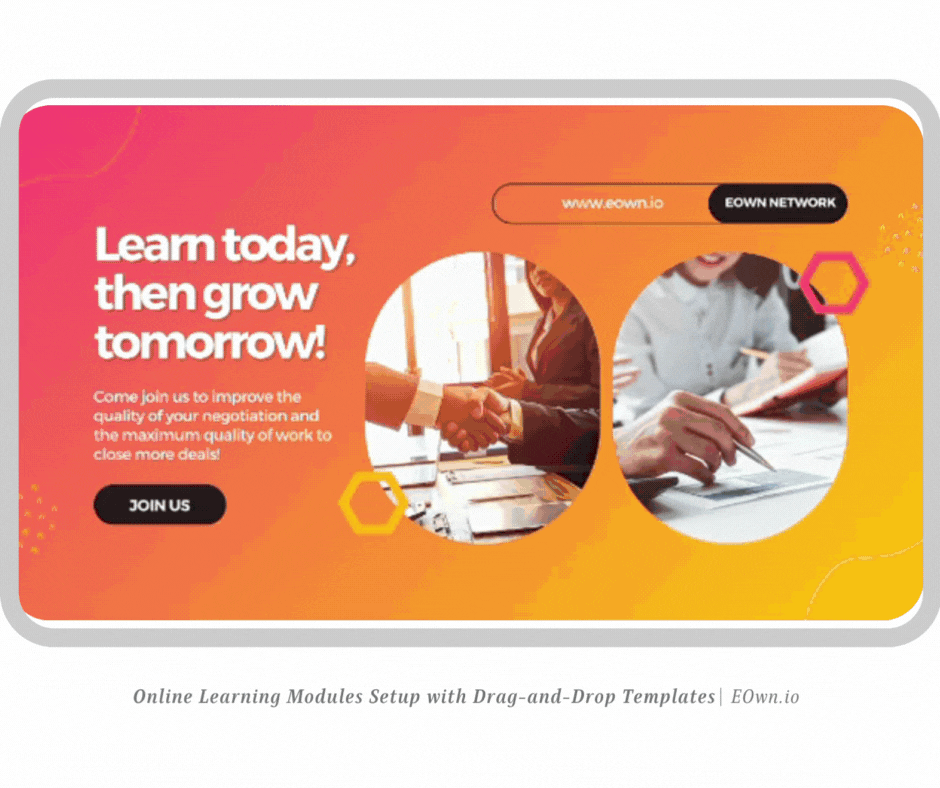
Online Course Template: Strategies for Closing Deals with Confidence
Add your lessons, modules and customize this template with your info
Another thing to consider is the profit you want to make. It’s important to cover the costs of making your digital product, but you also want to ensure you’re making a profit from each sale. Finding that sweet spot is key — That is why you need following digital product pricing strategies.
How to price your digital product — from experts guide
1. Cost-Plus pricing
This strategy is all about settings a right price for your digital products based on the actual production and distribution costs. A lot of new business owners start out with this strategy first
➡️ A great starting point, and the most straightforward method of determining a price when there’s little to no data.
➡️ It’s a straightforward approach that doesn’t require extensive market research (although it is highly recommended to do some).
- Simply calculate all your costs, from building and hosting the digital download to selling and promoting it.
- Divide the total by the number of products you can sell in a certain timeframe
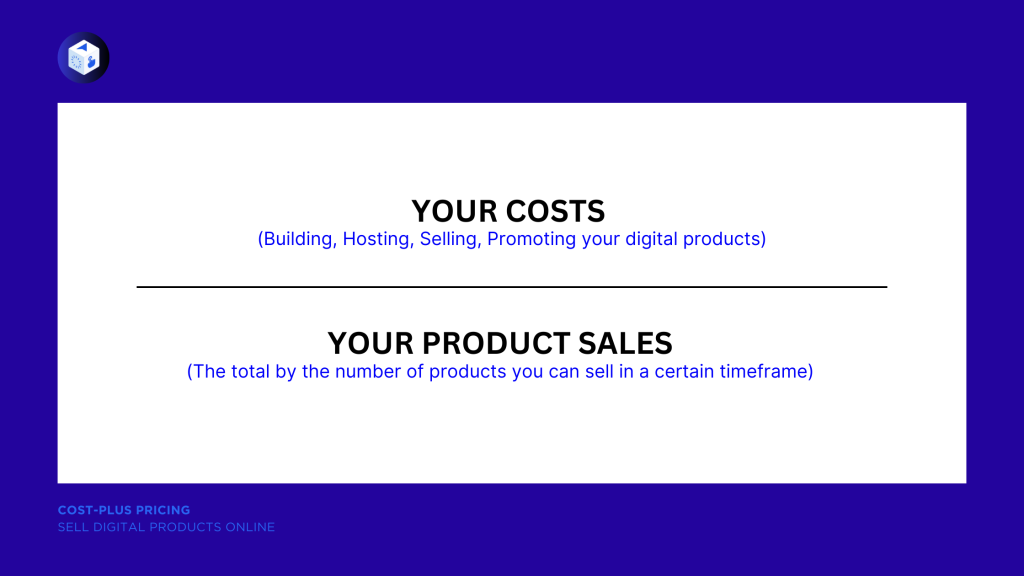
….and you’ve got your base price. Of course, it’s ideally to charge double (x2) that amount to ensure a profit for growth, here why you should consider to use Cost-Plus Pricing insteads of Cost-Base
🤔 While cost-plus pricing is easy and reliable, there are a few things to keep in mind:
- You might accidentally set your price too low and miss out on potential revenue.
- It doesn’t factor in the time and effort you put into creating your digital product.
- It also doesn’t consider the overall value of your product.
2. Competition-based pricing
This is where you set your prices based on what your competitors are charging for similar products or services
➡️ It works well if your niche market is already known for prestige pricing (using higher prices to suggest exclusivity)
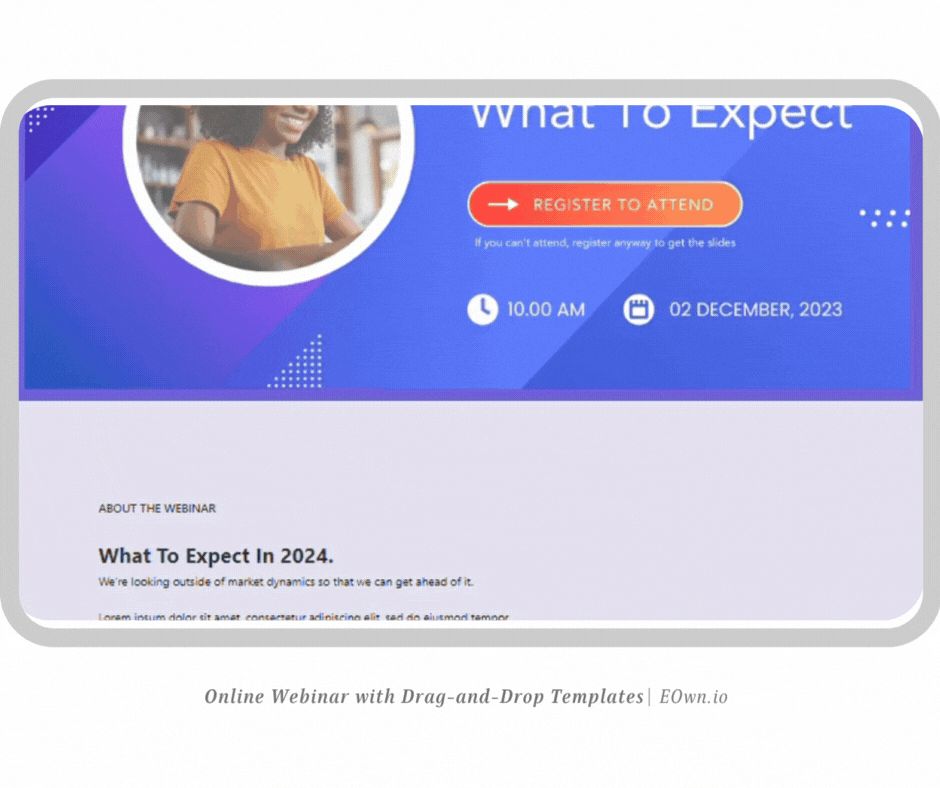
Online Webinar ‘Housing Market Trends’ Landing Page
Good for you to gain valuable insights and uncover ways to stand out from the crowd by offering unique value. This means, you’ll need to research the prices of your competition and determine if you want to come in lower or higher.
Remember, it’s not about blindly following your competitors’ pricing. Instead, use their prices to fine-tune your own.
Read More: 15 digital product ideas you can earn money online these days
Consider to do a Donation-Pricing Plan instead of a straightforward Paid Product aim to warm-up your target customer and make them feel more comfortable when approached, nurture your leads well then you can stand out well from your competitors.

Helpful resources that help you enhance your Leads Nurturing
includes Exclusive Content + Templates
3. Customer-based pricing
This is where you set your prices based on what your customers are willing to pay for your product or service.
🤔 Ask this question ‘How much your ideal customer would be excited to pay for a digital product like yours?’
🤔 Then thinking about the following factors to find your own answer
- What challenges are they facing?
- What problems are they trying to solve?
- How can your product come to help them or help them partly, at least?
- And most importantly, does your product seem valuable to them? If not, don’t worry, there are ways to enhance its perceived value.
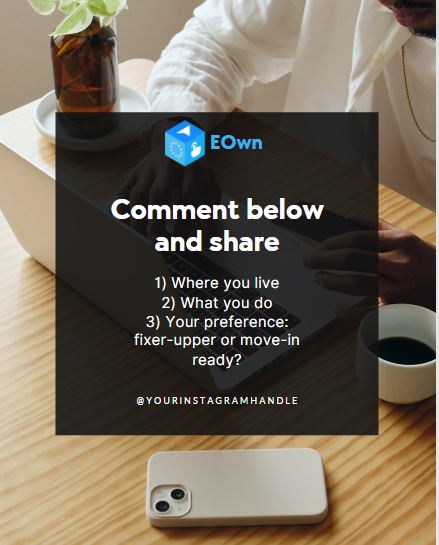
Engaging Social Post Template with caption
As you get to know your audience is key. By conducting market research, you’ll gain insights into who your ideal customer is and what they really value. You’ll get a better understanding of whether there’s a demand for your awesome digital product and figure out what your audience is comfortable paying.
How your digital product impacts your customers’ lives will lead you to the perfect pricing strategy. Ideally when you can set your best price points for digital products that both work for you and make your potential customers happy!
Read More: 15 Proven Strategies to Attract Your Customer Attention
4. Value-based pricing
This is where you set your prices based on how much they’re worth (This may come from your extensive experience, and for most sure, you should do some research with your real-life niche
Waittt! Before we dive deeper, make sure you’ve already done some market research and have a good sense of who your customers are and what they’re looking for in the real estate world. It is crucial!

Do questionnaires for your potential buyers, ask about their demand, what they looking for with their dream home,…
Value-based pricing aka focus on quality rather than quantity pricing strategy. Instead of pricing your digital products based on their cost or your future goals, think about their actual worth. Consider the problems your customers are solving with your digital product and what sort of results (transformation) they’ll get from them.
Read More: 8 Forms To Convert More Real Estate Leads
For instance, imagine you’re offering real estate coaching as a digital product. Instead of just looking at the time you’ve put into creating the content or the resources you’ve included, think about the value you’re providing to your clients.
Maybe your coaching program is helping them land their dream properties faster, or it’s giving them insider tips and tricks to succeed in the competitive market. These are all reasons to justify a higher price point, as long as you’re effectively communicating these benefits to your clients. So, remember to highlight the incredible value your digital products bring to the table in the real estate world!

Create Your Own Group Coaching Program
5. Profit-based pricing:
This is where you set your prices based on how much profit you want to make.
➡️ It is perfect for realtors like you who are selling multiple digital products, want to upsell or cross sell to make your revenue yield better, and it’s fit for selling online courses, a membership site, a coaching program, or others look alike.

Team Coaching Sales Page
To do so, start by listing all your products from least expensive to most valuable (even most expensive). This way, you can match your offerings (like digital downloads, online courses, challenges, coaching programs) with your customers at different stages, and match their desires at each step in their journey.
Your next step is to try to figure out where your digital products fit best. If you’ve got a low-value product meant to introduce new customers to your brand, think about setting a low price or offering it for free as a lead magnet (this is also good for nurturing your email list).
CONCLUSION
You can use any combination of these 5 levels of strategic pricing to come up with a price for your digital product(s) or service(s). What’s important is that you are clear about why you are charging what you are charging and know how your price is in line with the value that your product or service provides.
Read More: Strategies to make money online effectively – Expert Guide
So, let’s be smart about your pricing strategy. Not too high, not too low – just right. This way, you can cover your costs and still make a nice profit in the world of selling digital products online.
EOwn.io | All – in – One Marketing Tool
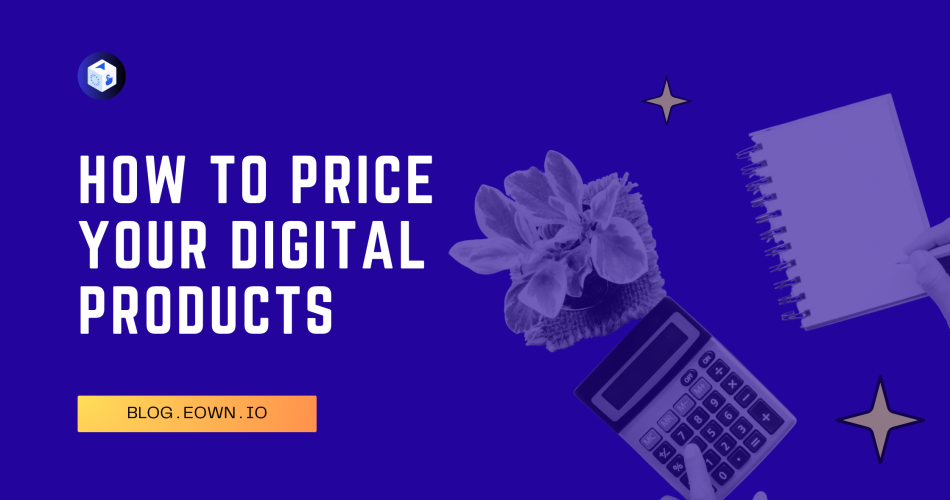

Thank you for any other informative site. The place else could I am getting that kind of information written in such an ideal manner? I’ve a project that I’m simply now running on, and I’ve been at the glance out for such info.